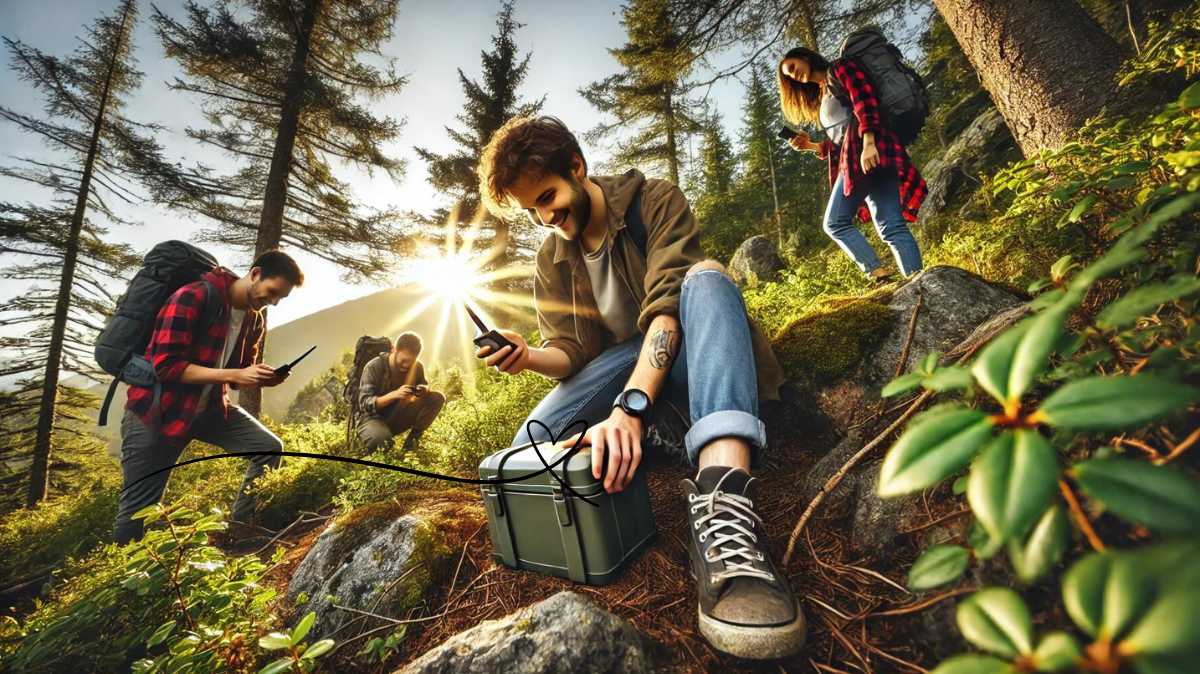Outdoor adventures are no longer limited to just hiking, camping, or nature exploration. One global phenomenon that blends technology with outdoor fun is geocaching, a treasure hunt for the digital age. The term “geocaching” is widely recognized today, but few people know the history of this exciting activity and the name it was initially called—GPS Stash Hunt. This article will explore the roots of geocaching, how it evolved from its original name, and the fascinating story behind this global outdoor activity.
Table of Contents
What Was the GPS Stash Hunt?
Before geocaching became the global outdoor hobby that it is today, it was known as GPS Stash Hunt. This original name was coined by Dave Ulmer, a GPS enthusiast, in May 2000. The idea was simple: hide a container in a specific location and share its GPS coordinates online so that others could try to find it.
The concept of the GPS Stash Hunt was a straightforward combination of the recently accessible GPS technology with a sense of adventure. Participants, known as “stash hunters,” used GPS receivers to track down the hidden “stashes” based on their coordinates.
The Birth of GPS Stash Hunt: May 2, 2000
The origins of the GPS Stash Hunt are intricately tied to the selective availability of GPS technology being turned off. On May 2, 2000, the U.S. government disabled selective availability for civilian GPS devices, making GPS signals far more accurate. This improved accuracy opened the door for creative new uses of the technology, one of which was the GPS Stash Hunt.
The very next day, on May 3, 2000, Dave Ulmer hid a black bucket in the woods near Beavercreek, Oregon, USA. He filled the bucket with various items, including videos, software, books, and a can of beans. The concept behind his “stash” was for finders to take an item and leave something else in return. Ulmer then posted the GPS coordinates of his stash—N 45° 17.460, W 122° 24.800—on an online GPS users’ forum, inviting others to find it.
How the GPS Stash Hunt Evolved into Geocaching
The GPS Stash Hunt was an instant hit, but it didn’t take long for a name change to be proposed. Within just a few days of Ulmer’s post, the term “stash” was considered problematic due to its connotation with illegal activities. The community quickly rallied around a more suitable name: geocaching. The term “geo” refers to Earth, and “caching” comes from the French word “cacher,” which means to hide. Together, they perfectly captured the spirit of the game—hiding treasures around the globe for others to find.
On May 30, 2000, the term geocaching was officially coined by Matt Stum, a GPS enthusiast. This name quickly replaced GPS Stash Hunt, marking the official rebranding of the activity.
The Explosion of Geocaching: From GPS Stash Hunt to a Global Phenomenon
What started as a single stash hidden in Oregon quickly blossomed into a global movement. As GPS receivers became more affordable and widespread, more and more people became involved in the activity. Websites dedicated to geocaching were established, most notably Geocaching.com, which was launched on September 2, 2000, by Jeremy Irish.
Geocaching offered a unique blend of technology and outdoor recreation, appealing to tech-savvy adventurers and families alike. Soon, caches were being hidden not just in the United States but all over the world. By 2024, there were over 3 million active geocaches in more than 190 countries.
The Influence of GPS Technology on Geocaching
GPS technology is at the heart of geocaching. The availability of precise satellite data has enabled the community to grow and evolve over the years. Initially, the accuracy of GPS receivers was within a 10-20 meter range, making it a real challenge to locate hidden stashes. However, as GPS technology improved, so did the accuracy of the game.
Modern geocachers often rely on smartphone apps instead of dedicated GPS receivers. These apps have significantly lowered the barrier to entry, allowing virtually anyone with a smartphone to participate. With real-time mapping, logging capabilities, and instant access to cache coordinates, the modern geocaching experience is more streamlined than ever before.
Geocaching Today: The Legacy of the GPS Stash Hunt
The initial GPS Stash Hunt may seem like a quaint beginning to what has now become a global pastime, but its legacy continues to influence the geocaching community. While the name has changed, the basic principles remain the same—hidden containers, shared coordinates, and the thrill of discovery.
In fact, the very first “stash” hidden by Dave Ulmer is still a revered piece of geocaching history. The original bucket was destroyed long ago, but a plaque now marks the location of that historic first geocache, serving as a tribute to the origins of the game. You can still visit the site, located at N 45° 17.460, W 122° 24.800.
Geocaching has grown far beyond its roots, with a vast online community, social events, and even geocaching challenges. It’s no longer just about finding a hidden box in the woods—there are trackables, virtual caches, earth caches, and even geocoins that add layers of complexity and fun to the experience.
Geocaching’s Contribution to Environmental Awareness
Geocaching isn’t just about finding hidden treasure—it has also become an important tool for raising awareness about the environment. Many geocachers take part in events like Cache In Trash Out (CITO), where participants clean up parks and natural areas while hunting for caches. These efforts encourage people to take care of the planet while enjoying the thrill of the hunt.
Additionally, geocachers are encouraged to respect nature, follow Leave No Trace principles, and avoid damaging the environment when placing or searching for caches. This has helped geocaching maintain a positive reputation among outdoor enthusiasts and land management agencies.
Is Geocaching Safe? Safety Tips for Modern Treasure Hunters
For those new to geocaching, safety is a top priority. Since the original GPS Stash Hunt, participants have explored everything from urban environments to remote wilderness locations. Here are some key safety tips to keep in mind when geocaching:
- Plan Ahead: Always check the difficulty and terrain ratings of caches before heading out. Some may require hiking or climbing, so ensure you’re prepared.
- Bring a Friend: Solo geocaching can be fun, but it’s always safer to go with a partner, especially when exploring more remote areas.
- Stay Connected: Carry a fully charged smartphone or GPS device, and ensure someone knows your location if you’re heading into the wilderness.
- Pack Essentials: In addition to your GPS or smartphone, bring water, snacks, a first aid kit, and a flashlight.
- Respect Private Property: Always ensure that caches you search for are placed on public land or with permission from landowners.
Frequently Asked Questions (FAQs)
1. What was the original name for geocaching?
The original name for geocaching was GPS Stash Hunt, coined by Dave Ulmer in May 2000.
2. Why did the name change from GPS Stash Hunt to Geocaching?
The term “stash” was thought to have negative connotations, so the community suggested the name “geocaching,” which was adopted in May 2000.
3. Who created the first geocache?
Dave Ulmer hid the first geocache, referred to as a “stash,” in Oregon, USA, on May 3, 2000.
4. How do I start geocaching today?
You can start by downloading a geocaching app, such as the official Geocaching® app, or visiting websites like Geocaching.com, where you’ll find caches near you.
5. How accurate is GPS for geocaching?
Modern GPS technology allows for accuracy within 3-5 meters, making it much easier to find caches than in the early days.
6. Is geocaching free?
Yes, basic geocaching is free, but premium memberships on platforms like Geocaching.com offer extra features.
Final Thoughts
The GPS Stash Hunt may have started as a small experiment in utilizing GPS technology, but it laid the foundation for what has become a beloved global adventure known as geocaching. As GPS technology continues to evolve, so too will geocaching, offering even more opportunities for discovery, community, and fun.
For more information on the history of geocaching, visit the official Geocaching.com history page.
Author

An aspiring business leader, I am working towards my dream of graduating from Stanford University with a degree in Business Management. Passionate about sharing knowledge, I strive to empower others through education and collaborative learning.
View all posts


